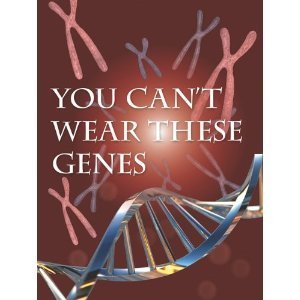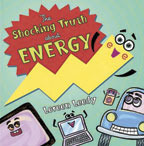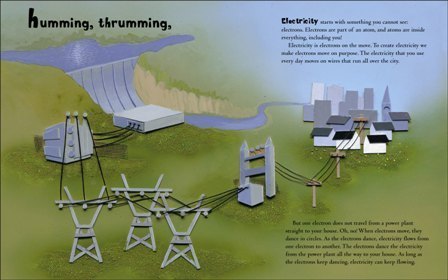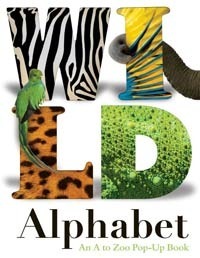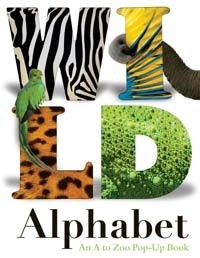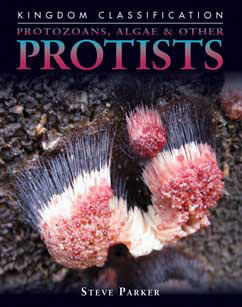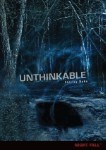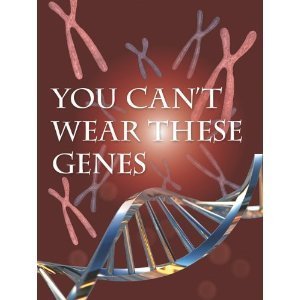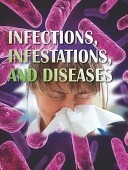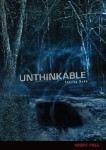Shirley Smith Duke's Blog, page 13
October 20, 2010
Do You Know about INSECTS?
October 13, 2010
You Can't Wear These Genes
You Can't Wear These Genes
by Shirley Duke
Rourke, 2011
Let's Explore Science Series
ISBN #978-1-61590-563-8
Grades 4-7
Nonfiction
"You have your mother's green eyes."
"Your chin comes from your father."
"You must get your musical ability from your parents."
People have always noticed traits, or characteristics, that are similar between parents and their kids. Some of these traits, such as eye color and a dimpled chin, can be easily seen. Other traits, like blood type and personality, cannot be seen.
Parents pass down traits to their offspring, or young. The offspring have these inherited traits for the rest of their lives. Genetics is the branch of science that studies how traits are passed along.
My first science book as the author! It's been a dream of mine to write a science book and now I have. This one, and the other one I wrote, are in the Let's Explore Science series by Rourke. This is the book I'm featuring on the Nonfiction Book Blast panel at 2011 ALA in New Orleans.
This introduction to genetics covers the basics of what it takes to pass along hereditary material and how it is manifested in offspring of humans, touching on animals and plants. Complicated terms and processes are explained on a reading level accessible by elementary readers. Labeled graphics and large photos help clarify the text and make the book appealing and bright.
Beginning with the basic building block, the cell, after defining genes and DANA, the chapters continue with boy or girl, combining traits, problems with genes, and the future of genetics. Short sidebars scattered throughout the text give additional information and break up the text into readable chunks. The book contains a strong glossary, index, and website information, plus a picture and bio of the author—that's me!
This complicated subject is made easier to understand in You Can't Wear These Genes and explores the very beginnings of genetics while making it accessible to young readers (something I had a great deal of experience doing as a teacher). The wealth of knowledge being discovered in this complex field is arriving weekly and this book is an excellent way for young scientists to begin to understand how the cycle of life and growth occur.
Activity
Create your own DNA sequence. Use this activity to put together base pairs. As each pair is joined, write down the sequence for 20 pairs and then read the information below the model. Then look up what components create the "rungs" of the DNA ladder. Draw a simple diagram and label the parts.
Here's a good place to start for more information.
Here's more excellent information about genetics.
National Science Standard: reproduction and heredity
Book is author's own copy








October 5, 2010
The Shocking Truth About ENERGY
The Shocking Truth About Energy
By Loreen Leedy
Holiday House, 2010
ISBN #978-0-8234-2220-3
Grades K-3
Nonfiction
"Hi, there! My name is Erg, and I'm pure ENERGY! Everybody loves a powerhouse like me. In fact, people want more and more ENERGY every day. That's because I make everything happen. The funny thing is, I'm everywhere! The hard part is…"
This book is an excellent introduction to energy, the forms it takes, and how we use it. The cartoon like Erg narrates the simple, comprehensive book in an easy to understand text and sidebars and caption bubbles add further information. Following each energy form, including light, muscle, fossil fuels, electricity (and global warming), nuclear, solar, wind, water, geothermal, and plants, a side by side comparison chart shows advantages and disadvantages. The book concludes with a short discussion of ways to save energy and why. Back matter include web links, more detail, saving energy tips, and fossil fuel information.
The publisher says the book is for younger audiences, but I loved it and can see it read by older kids, too. It is succinct and complete, and a wonderful resource. I'd love to see it in every library in this energy-conscious age.
Activity
I won't reinvent the wheel when these teachers have suggested such excellent activities.
Try one of them!
Teacher activity suggestions from Holiday House with great resources.
Coloring page from Leedy's website.
Websites listed on the Holiday House site:
www.proteacher.org/c/409_Energy.html
www.solarenergy.org/students-and-educators
http://www.depweb.state.pa.us/justforkids/cwp/view.asp?q=472538
Here's an excellent companion book by Anastasia Suen that follows electricity from its source to our homes and includes another activity. It would be a great follow-up to this book:
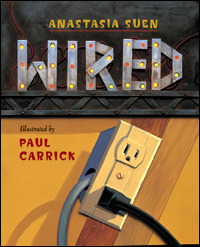
Author: Anastasia Suen Illustrator: Paul Carrick
ISBN: 978-1-57091-599-4
Ages: 6 - 9
National Science Standard: light, heat, electricity, and magnetism
Book provided by publisher for Librarian's Choices Book review committee.








September 29, 2010
WILD Alphabet + The Cybils! + NOVA
Nominate your favorite book for the Cybils. 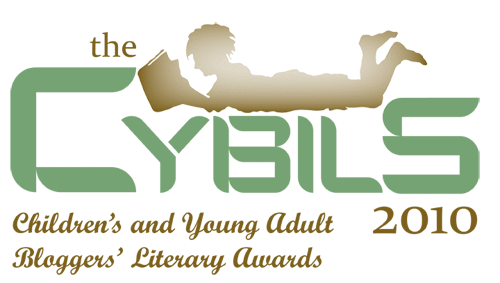
You have 12 categories for your nominations and they are open until October 15. I'm a first round judge for nonfiction picture book and excited to get to read all these fabulous books. Stop by and take a look!
Other news: My first guest blog post is up on the NOVA website. Take a look!
Wild Alphabet
by Mike Haines and Julia Frolich
Kingfisher, 2010
ISBN #780753464724
Ages 3 and up
A is antelope, B is bison, C is chinchilla…
This alphabet book opens each spread with a pop up animal depicting the letters of the alphabet and two or three facts about the animal. The animals aren't usually the ones commonly recognized for those letters, and the facts are child-friendly and interesting.
The small trim makes it easy for children to hold. The animals are in color on the left side, with the pop up spreading across the center of the two pages in black and white. The first letter begins immediately and Z ends on the back, with back matter on the back cover. The focus seems to be more on the animal than the letters, although it can be fun to trace each letter within the moving parts.
Sure to capture a young child's fascination with motion, the book is appealing and fun to look through. I played with the motion myself as I read the book and showed it to friends, too. Sturdy pages should stand up to frequent use and the motion is small enough to hold up well.
Activity1 (young ages)
Create an animal alphabet book of your own. List the letters of the alphabet and animals from the book on blank pages. Look for pictures of other animals and paste them under the correct letter.
You can find animal pictures at this site.
More animal pictures.
Activity 2 (older children)
Classify the animals from the book into groups, using the headings mammal, bird, reptile, amphibian, and fish. Then look for pictures to add animals to the chart.
You can find animals at this site.
More animal pictures.
National science standard: characteristics of animals
Book provided by publisher








WILD Alphabet
Wild Alphabet
by Mike Haines and Julia Frolich
Kingfisher, 2010
ISBN #780753464724
Ages 3 and up
A is antelope, B is bison, C is chinchilla…
This alphabet book opens each spread with a pop up animal depicting the letters of the alphabet and two or three facts about the animal. The animals aren't usually the ones commonly recognized for those letters, and the facts are child-friendly and interesting.
The small trim makes it easy for children to hold. The animals are in color on the left side, with the pop up spreading across the center of the two pages in black and white. The first letter begins immediately and Z ends on the back, with back matter on the back cover. The focus seems to be more on the animal than the letters, although it can be fun to trace each letter within the moving parts.
Sure to capture a young child's fascination with motion, the book is appealing and fun to look through. I played with the motion myself as I read the book and showed it to friends, too. Sturdy pages should stand up to frequent use and the motion is small enough to hold up well.
Activity (young ages)
Create an animal alphabet book of your own. List the letters of the alphabet and animals from the book on blank pages. Look for pictures of other animals and paste them under the correct letter.
You can find animal pictures at this site.
More animal pictures.
Activity 2 (older children)
Classify the animals from the book into groups, using the headings mammal, bird, reptile, amphibian, and fish. Then look for pictures to add animals to the chart.
You can find animals at this site..
More animal pictures.
National science standard: characteristics of animals
Book provided by publisher








September 21, 2010
PROTISTS
Protists
By Steve Parker
Compass Points Books, 2010
Kingdom Classification series
ISBN # 9780756542245
Grades 5-9
Nonfiction
"Although protists are almost everywhere you look, you cannot see them. They are mostly microscopic life-forms, each made of one living unit called a cell. Some protists are like tiny animals because they take in or eat food. Other protists, the protophytans, are like tiny plants because they use the sun's light energy to grow. Some protists have traits of both plants and...
September 13, 2010
Math vs. Words
These are my books.
I love words, but I hate math. I struggled in math, and even considered changing my major from science to avoid the math. Glad I didn't, but I still double check myself at times using my fingers. I think Ms. Calvin in 4th grade was the cause! Even though she did bring in slides of her extensive travels.
However, I turned out to be a good elementary math teacher for the struggling kids. I went through every single step and that seemed to make it clearer. Real math teachers...
September 7, 2010
Vacation
August 31, 2010
Unthinkable
by Shirley Duke
Night Fall series
Darby Creek–Lerner, 2010
ISBN #978-0761361428
Ages 11-18
young adult
fiction
This isn't my blog's focus in any way, but this IS my latest book. It arrived last week and I had to say something. It's been an experience to write something so different from my first one. No Bows! is a picture book for toddlers and Unthinkable is for teens. Quite a different audience!
It's a high interest horror novel and is Volune I in the Night Fall series Darby Creek has d...
August 24, 2010
CHEMISTRY–Getting a Big Reaction!
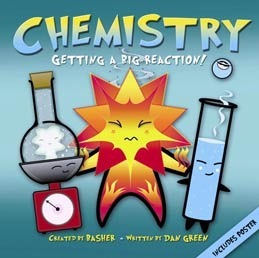
CHEMISTRY
Getting a Big Reaction
Created and illus. by Simon Basher, written by Dan Green
Kingfisher, July 2010
ISBN: 978-0-7534-6413-7
Ages 10 and up
nonfiction
"Welcome to the wonderful, wild, and sometimes wacky world of chemistry. Full of alchemy and mystery, it's the oldest of all the sciences. Chemistry is the study of the stuff the world is made from—the physical and chemical properties of matter—and how it behaves in chemical reactions. This is the field that has given humankind a hundred ...
Shirley Smith Duke's Blog










